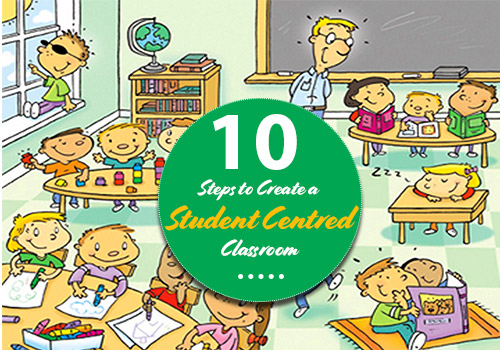Teaching and preparing every student for a bright career is quite serious business. But a teacher doesn’t have to behave seriously or humorless to fulfill his or her job. In fact, humor allows them to enhance their ability to connect with students in college.
Free Class Room Activity Apps (Check it Now)
Including funny stories when teaching, telling jokes and sharing light moments in a classroom keeps students interested throughout the class. Many teachers also utilize relevant personal experiences while teaching.
But there is another side of the story. Humor is effective in a college classroom only if teachers use them properly. Wrong methods of humor can lead to completely opposite and unwanted results.
It is important for every teacher to understand the pros and cons of classroom humor before utilizing it.
The Pros of using Humor in a College Classroom
A teacher with a great sense of humor can turn a class into a comfortable experience of each and every student. With that, come multiple pros:
1. Enhances learning ability
Serious learning in a classroom can make many students feel stressed after a while. To cope with the stress, their minds start distracting them to other things. So, a student might look straight at a teacher but can be thinking about a video game he played last night.
The distraction is a way of our mind to save us from stressful situations. But when learning, it impacts our attention.
A teacher can increase students’ attention span without stressing them out. Humor is key here. Utilizing humor that engages every student is impactful in terms of gaining their attention throughout the class.
2. Improves emotional and social positivity
A classroom learning is a group learning experience. Students from different backgrounds and cultures meet together to learn. The differences in culture can create a sense separation among students. But there is one thing that can bring all of them together. Humor! So, if a teacher can use his or her humorous nature to bring a class together, it allows students to feel comfortable. They can feel positive emotionally and socially in a classroom, which lightens the mood and enhances the learning experience.
3. Increases Class Attendance
In college, if students think your class is “boring”, they tend to avoid all your classes. This is another important reason why teachers need to try different ways to engage students. Humor is the easiest and most effective way of making classes interesting for students.
Also Read: How To Turn Around Annoying Behavior Of Students In Classroom
You might want to talk about a complex formula of math or go deep into the explanation of poetry. But remember, you have to make it interesting first. Humor is like a chariot you use to collectively take your class on an interesting journey of learning.
4. Improves Test Performance
A humorous conversation is interesting and entertaining. And our mind tends to retain every entertaining and interesting conversation.
Using humor in the classroom helps students retain the learned topics. And that allows students to perform better on tests.
When they retain the knowledge, their mind shifts the interest to the learning process more. So, students tend to prepare more effectively for their tests. Gradually, it increases the performance and grades of every student.
5. Reduces the fear of a subject
For many college students, one or more subjects can seem too overwhelming. Some fear mathematics, some find physics difficult or any other subject. This fear of a subject limits student’s ability to grow his or her understanding of that subject. So, even if a student is performing great in all other subjects, one subject keeps ruining the overall grades.
For such students, teachers need a humorous way of teaching to make classrooms lighter and easy to understand. Jokes and real-life funny examples help in reducing the complexity of learning material. Hence, students can eventually decrease their sense of fear and focus on pushing hard to learn effectively.
The cons of using humor in a college classroom
As mentioned before, there is also a wrong way of using humor in the classroom. If you fail at your attempts of using humor, it can create confusions and difficulties in a classroom as well.
1. Distracting Students From The Point
Humor in a classroom is not like a chit-chat experience with your friends at a party. Every humorous moment should align somehow with what you want to convey to students. If you mess up your joke or start talking about something which has nothing to do with what you’re teaching, it creates a distraction.
A humorous story or a joke can easily grab the attention of students. So, if it is distracting, students forget about the topic itself and start thinking about that joke or a story only. When you try to come back to the topic again, the minds of students shut down from it.
2. Not Figuring Out the Subject Understanding of Students
A joke won’t work if students have no clue what you are talking about. For a Ph.D. holder physicist, a joke about the galaxies can be hilarious, but for students, it might not make any sense.
Making a joke and using humor is about creating a collective understanding in the whole classroom. But many teachers get blinded by their own level of knowledge. They forget about the gap of subject understanding and make jokes that don’t seem funny to students.
In that case, students don’t connect with the topic. Moreover, they start feeling inferior and overwhelmed by the subject. So, you have to choose your intellectual jokes wisely to avoid such difficulties.
3. Using Sarcastic, Offensive or Rude Humor
Effective humor in a classroom offers a collective comfort level to all students. But if a teacher takes the wrong road and becomes sarcastic, offensive or rude, humor stops working.
Comparing one student with another, telling violent experiences, making racist comments and cursing are some of many wrong approaches of using humor in the classroom.
Also Read: 13 Ways To Deal With Bullies In Classroom?
For many teachers, just adding curse words is enough to make people laugh. But that’s not the right way of connecting with students. Similarly, a teacher can’t make sexist jokes as well.
All these wrong ways of using humor result in the separation between students and teachers. Majority of students try to stay away from such teachers.
4. Creating Awkward Situations By Overdoing It
Rehearsing a joke or a story doesn’t work at all. Humor has to come naturally to you. If you try too hard, it becomes awkward for students and they try to stay as far away as possible from your classes.
Using modern “lingos” or “slangs”, even if it’s not a part of your personality, can’t work. At the same time, making stupid statements to seem “cool” won’t provide any educational value as well. On the contrary, it would make you look lame in front of the students.
Remember that students want to admire you for your knowledge and your ability to convey that knowledge in a humorous manner.
5. Targeting Particular Students to make jokes
Targeting students to create humor is a negative way of using humor. Other students spend more time thinking about how that particular student is feeling instead of learning. Some students might laugh, but they keep on thinking negatively about the teacher at the same time.
Similarly, many teachers make fun of students who don’t score well in their tests. Low scores are a story of every student’s life, every once in a while. Every student has his or her own nightmare of a low score in tests. So, no one ever enjoys if a teacher makes fun of even a particular student about his or her scores.
What should a Teacher do to use Humor?!
To use humor effectively, a teacher has to understand all students. At the same time, a teacher should cultivate a natural, classroom-friendly humorous personality.
When making a joke, keep evaluating how each and every student is reacting to that. See if they are laughing, or seem confused, angry or frustrated. These signs are important to change the topic before it goes too far.
So, now you have a comprehensive idea of how humor can benefit or ruin the atmosphere in your classroom. It is all about using the right kind of humor in the right manner.




